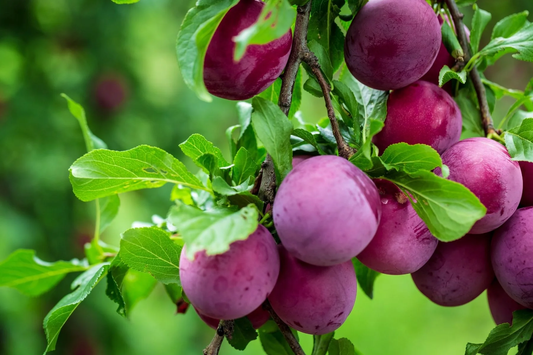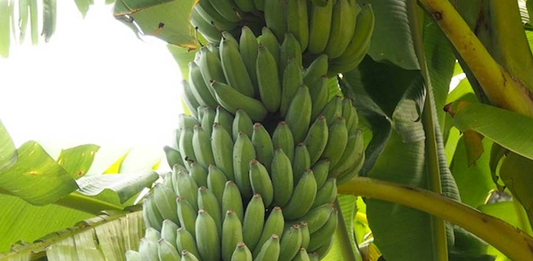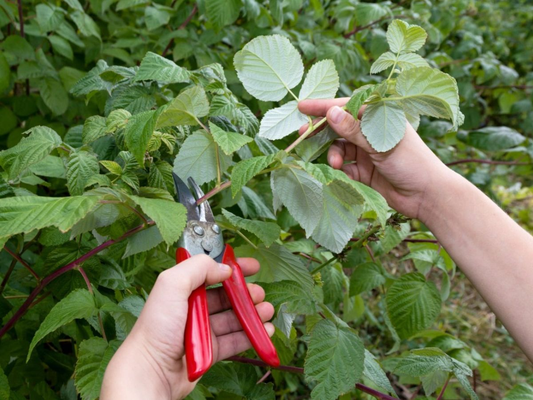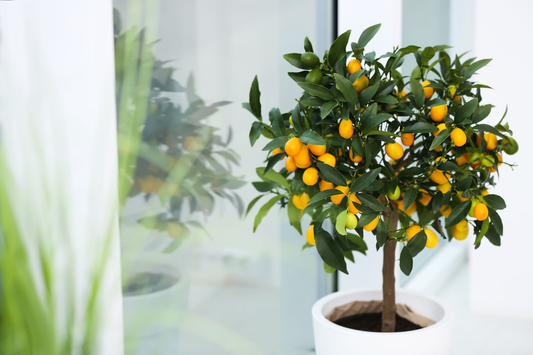Low-Maintenance Indoor Plants: Transform Your Space Without the Hassle
Share
- 1. Introduction
- 2. Benefits of Low-Maintenance Indoor Plants
- 3. Key Features to Look for in Low-Maintenance Plants
- 4. Top Low-Maintenance Indoor Plants
- 5. Comparison Table: Best Low-Maintenance Indoor Plants
- 6. Tips for Keeping Low-Maintenance Plants Healthy
- 7. Common Challenges and Troubleshooting Tips
- 8. Decorating Ideas with Low-Maintenance Indoor Plants
- 9. Additional Low-Maintenance Indoor Plants Worth Mentioning
- 10. FAQ: Frequently Asked Questions
1. Introduction
Indoor plants have become an essential part of modern living spaces. Whether it’s a cozy apartment, a bustling office, or a spacious home, indoor greenery adds life and warmth to any environment. However, for those with busy schedules or limited experience in plant care, maintaining indoor plants can seem like a daunting task. That’s where low-maintenance indoor plants step in, offering the perfect solution for people who want the beauty and benefits of plants without the hassle.
These plants require minimal care while still offering a range of advantages:
- Purify the Air: - Many low-maintenance plants, like the Snake Plant and Peace Lily, are excellent natural air purifiers. - They help remove toxins such as formaldehyde, benzene, and carbon monoxide, creating a healthier indoor environment.
- Reduce Stress: - Studies have shown that spending time around greenery can lower stress levels and enhance focus. - Indoor plants promote a calming and peaceful atmosphere, perfect for work or relaxation.
- Add Aesthetic Appeal: - Indoor plants can elevate the decor of any room with their vibrant green hues and unique shapes. - From cascading Pothos to sleek ZZ Plants, there’s a plant for every interior style.
- Boost Mental Health: - Interacting with plants fosters a sense of responsibility and accomplishment. - The presence of greenery can improve mood and emotional well-being.
The purpose of this blog is simple: to help you discover the easiest indoor plants to care for. Whether you're a plant enthusiast or a complete beginner, this guide will provide detailed insights into selecting, caring for, and decorating with low-maintenance indoor plants. With minimal effort, you can transform your space into a green sanctuary that thrives year-round.

2. Benefits of Low-Maintenance Indoor Plants
Low-maintenance indoor plants offer a wide array of benefits that go beyond their aesthetic appeal. These hardy plants not only enhance the beauty of your living space but also contribute to your physical, mental, and environmental well-being. Below, we break down the key advantages of keeping low-maintenance plants in your home or office.
-
Air Purification:
- Plants like Snake Plant and Peace Lily act as natural air filters.
- They remove harmful toxins such as benzene, formaldehyde, and carbon monoxide from the air.
- Cleaner air can improve respiratory health and reduce allergies.
-
Mental Health Boost:
- Numerous studies show that being around plants reduces stress and anxiety levels.
- They enhance concentration and productivity, making them ideal for workspaces.
- Spending time caring for plants promotes mindfulness and relaxation.
-
Aesthetic Value:
- Indoor plants add vibrant greenery and a natural touch to any decor style.
- Trailing plants like Pothos or bold options like Monstera instantly elevate interior design.
- They help create inviting and refreshing spaces for guests and occupants alike.
-
Cost-Effectiveness:
- Low-maintenance plants require fewer resources like water and fertilizers, saving you money.
- Hardy plants tend to live longer, reducing the need for frequent replacements.
-
Eco-Friendly Choice:
- Indoor plants help reduce your carbon footprint by absorbing carbon dioxide and releasing oxygen.
- They support sustainable living by promoting greener environments indoors.
3. Key Features to Look for in Low-Maintenance Plants
When choosing low-maintenance indoor plants, it's essential to focus on specific traits that ensure they require minimal care while thriving in various indoor conditions. Below are the key features to look for in such plants:
-
Low Water Requirements:
- Choose plants like the Snake Plant or ZZ Plant that can survive long periods without water.
- These plants store moisture in their roots, leaves, or stems, making them drought-resistant.
- Perfect for individuals who may forget to water regularly or travel frequently.
-
Adaptability to Low Light:
- Look for plants that thrive in low to medium indirect light, such as the Pothos and Peace Lily.
- They are ideal for rooms with fewer windows or areas like bathrooms and offices.
- These plants tolerate dim conditions without compromising growth or appearance.
-
Slow Growth:
- Slow-growing plants like the Rubber Plant reduce the need for frequent pruning.
- Minimal growth also means fewer instances of repotting, saving time and effort.
-
Resistance to Pests and Diseases:
- Hardy plants like Cast Iron Plant and Spider Plant resist common indoor pests like spider mites and aphids.
- They don’t require frequent use of pesticides or constant monitoring for infestations.
-
Minimal Fertilizer Needs:
- Opt for plants that thrive with occasional feeding, such as the Jade Plant or Peace Lily.
- These plants can maintain healthy growth without frequent fertilization schedules.

4. Top Low-Maintenance Indoor Plants
Low-maintenance indoor plants come in a variety of shapes, sizes, and care requirements. The following plants are not only resilient but also bring beauty and health benefits to any indoor space. Here’s a detailed look at the best low-maintenance options and why they are perfect for beginners and busy individuals.
4.1. Snake Plant (Sansevieria)
The Snake Plant, often referred to as "Mother-in-Law's Tongue," is a classic low-maintenance option loved for its striking upright leaves and hardiness.
-
Care Tips:
- Thrives in low to bright indirect light, making it highly adaptable.
- Requires watering only once every 2-3 weeks or when the soil is completely dry.
- Perfect for those who forget to water plants regularly.
-
Benefits:
- An excellent natural air purifier, removing toxins like benzene and formaldehyde from indoor air.
- Highly resilient, it can survive in almost any indoor condition.
4.2. Pothos (Epipremnum aureum)
Pothos, also known as "Devil's Ivy," is a favorite for its trailing vines and forgiving nature.
-
Care Tips:
- Survives in a variety of lighting conditions, from low light to bright indirect light.
- Needs infrequent watering—only when the top inch of soil feels dry.
- Easily propagated by cutting, making it a cost-effective option for plant enthusiasts.
-
Benefits:
- Adds trailing greenery to shelves, desks, and hanging planters.
- Effective in improving air quality by removing common indoor toxins.
4.3. ZZ Plant (Zamioculcas zamiifolia)
The ZZ Plant is renowned for its glossy, waxy leaves and ability to thrive on neglect.
-
Care Tips:
- Tolerates low light, making it suitable for dim corners and rooms with minimal sunlight.
- Requires watering only when the soil is completely dry, typically every 2-4 weeks.
- Avoid overwatering as it is prone to root rot.
-
Benefits:
- Low-maintenance yet stunning, with sleek leaves that add a polished look to any space.
- Ideal for offices and homes with low natural light.
4.4. Peace Lily (Spathiphyllum)
The Peace Lily is admired for its elegant white flowers and ease of care.
-
Care Tips:
- Prefers moderate watering—water when the top inch of soil feels dry.
- Thrives in indirect light; avoid direct sunlight to prevent leaf burn.
- Wipe leaves occasionally to keep them free of dust and improve photosynthesis.
-
Benefits:
- Produces beautiful white flowers, adding a touch of elegance to any room.
- Effective at filtering toxins like ammonia, benzene, and formaldehyde from indoor air.
4.5. Spider Plant (Chlorophytum comosum)
The Spider Plant is a versatile and forgiving option, often seen in hanging baskets or decorative pots.
-
Care Tips:
- Thrives in bright, indirect light but can tolerate lower light conditions.
- Water once a week or when the soil feels dry to the touch.
- Prune the plantlets ("spiderettes") to encourage fuller growth or propagate them to create new plants.
-
Benefits:
- Great for hanging baskets, with cascading foliage that adds movement to any space.
- Known for its air-purifying abilities, helping to create a cleaner indoor environment.

5. Comparison Table: Best Low-Maintenance Indoor Plants
Below is a comparison table summarizing the key attributes of the best low-maintenance indoor plants. This table will help you quickly identify which plant best suits your space and care preferences.
| Plant Name | Light Requirements | Watering Frequency | Special Benefits | Difficulty Level |
|---|---|---|---|---|
| Snake Plant | Low to Bright Light | Every 2–3 Weeks | Air purifier | Beginner-Friendly |
| Pothos | Low to Bright Light | Weekly | Trailing greenery | Beginner-Friendly |
| ZZ Plant | Low to Moderate Light | Monthly | Minimal upkeep | Beginner-Friendly |
| Peace Lily | Indirect Light | Weekly | Blooms flowers | Slightly Moderate |
| Spider Plant | Bright, Indirect Light | Weekly | Air purification | Beginner-Friendly |
This comparison provides a clear overview of light, watering needs, and unique benefits to help you make an informed choice based on your indoor environment and lifestyle.
6. Tips for Keeping Low-Maintenance Plants Healthy
Even low-maintenance plants require basic care to thrive. Here are some essential tips to keep your indoor greenery healthy and vibrant:
-
Choosing the Right Pot:
- Always use pots with drainage holes to prevent waterlogging.
- Ensure the pot size suits the plant; avoid oversized pots that retain excess moisture.
- Consider using terracotta pots for better airflow to the roots.
-
Watering Smartly:
- Learn to recognize signs of overwatering, such as yellowing leaves or root rot.
- Signs of underwatering include drooping or crispy leaves.
- Water only when the top inch of soil feels dry to the touch.
- Use a saucer under the pot to catch excess water but empty it to avoid stagnant water.
-
Rotating Plants:
- Rotate your plants every couple of weeks to ensure even light exposure on all sides.
- This prevents plants from leaning towards the light source and promotes balanced growth.
-
Dusting Leaves:
- Dusty leaves block light and hinder photosynthesis.
- Gently wipe leaves with a damp cloth or use a soft brush to clean intricate leaf patterns.
- Avoid using leaf shine products, as they can clog pores.
-
Fertilizing Occasionally:
- Use a slow-release fertilizer every 2–3 months to provide extra nutrition.
- For liquid fertilizers, dilute them to half strength to avoid overfeeding.
- Focus on fertilizing during the growing season (spring and summer).

7. Common Challenges and Troubleshooting Tips
Even the hardiest low-maintenance indoor plants can encounter occasional issues. Here’s how to troubleshoot the most common challenges:
-
Yellowing Leaves:
- Cause: Overwatering often leads to root rot, causing leaves to yellow.
- Solution: Allow the soil to dry out before the next watering, and ensure the pot has proper drainage.
- Cause: Lack of light can also result in yellow leaves.
- Solution: Move the plant to a brighter location with indirect sunlight.
-
Wilting:
- Cause: Wilting often indicates underwatering.
- Solution: Water the plant thoroughly until water drains out from the bottom, but avoid overwatering.
- Tip: Use a moisture meter to monitor soil dryness.
-
Pest Infestations:
- Common Pests: Watch out for spider mites, mealybugs, and fungus gnats.
- Natural Remedies:
- Spray neem oil diluted in water to deter pests.
- Use a mild soapy water solution to wash leaves and eliminate pests manually.
- Prevention: Inspect new plants before bringing them indoors and clean leaves regularly.
-
Leggy Growth:
- Cause: Inadequate light can cause plants to grow tall and spindly.
- Solution: Move the plant to a brighter location or supplement with grow lights.
- Tip: Prune leggy stems to encourage bushier growth.
8. Decorating Ideas with Low-Maintenance Indoor Plants
Low-maintenance indoor plants aren’t just practical; they’re also a fantastic way to enhance your home’s decor. Here are some creative ways to style your space with greenery:
-
Creating a Green Corner:
- Group plants of varying heights to add depth and texture to an empty corner.
- Combine tall plants like a Snake Plant with medium-sized options like a Peace Lily.
- Use decorative pots to match your home’s aesthetic.
-
Hanging Plants:
- Install macramé hangers or wall-mounted hooks to display trailing plants like Pothos or Spider Plants.
- Ideal for spaces with limited floor space, such as small apartments.
- Place near windows for a cascading greenery effect.
-
Desktop Plants:
- Choose compact plants like ZZ Plants or succulents for your work desk.
- Use minimalistic pots for a modern, clutter-free look.
- Enhances productivity by bringing a calming touch to your workspace.
-
Bathroom Plants:
- Place humidity-loving plants like ferns or Peace Lilies in your bathroom.
- Use a shelf or windowsill to create a spa-like vibe.
- Ensure the space has some natural light or use artificial grow lights.
-
Living Walls:
- Create vertical gardens using wall-mounted planters or grid systems.
- Perfect for homes with limited floor space.
- Use hardy plants like Pothos or ferns that thrive with minimal care.
9. Additional Low-Maintenance Indoor Plants Worth Mentioning
If you're looking for even more low-maintenance indoor plant options, here are a few additional choices that are both resilient and easy to care for:
-
Aloe Vera:
- Known for its healing properties, Aloe Vera is a hardy succulent.
- Thrives in bright, indirect light and requires minimal watering.
- Its gel can be used for soothing burns and skin irritations.
-
Rubber Plant (Ficus elastica):
- Known for its large, glossy leaves, this plant can tolerate low light.
- Requires watering only when the soil is dry.
- Perfect for adding a bold statement to your indoor garden.
-
Cast Iron Plant (Aspidistra elatior):
- As its name suggests, it’s virtually indestructible.
- Thrives in low light and requires minimal attention.
- Its dark green leaves are a perfect addition to shaded areas.
-
Chinese Evergreen (Aglaonema):
- Thrives in almost any condition, from low light to high humidity.
- Requires minimal watering and is known for its striking foliage.
- Available in a variety of colors, from green to silver patterns.
10. FAQ: Frequently Asked Questions
Here are some common questions people have when it comes to caring for low-maintenance indoor plants:
-
10.1. What is the easiest indoor plant to care for?
- Snake Plant and ZZ Plant are the most forgiving for beginners.
- Both require minimal watering and thrive in low light.
- These plants can adapt to a range of conditions, making them great choices for first-time plant owners.
-
10.2. How often should I water low-maintenance plants?
- Typically, low-maintenance plants require watering once every 1–3 weeks, depending on the type of plant.
- Check the soil moisture regularly—only water when the soil is dry to the touch.
- Overwatering can lead to root rot, so it’s better to let the plant dry out between waterings.
-
10.3. Can low-maintenance plants survive in dark rooms?
- Yes, many low-maintenance plants, such as Snake Plants and ZZ Plants, can adapt to low-light conditions.
- These plants are excellent for spaces with limited natural light, though they may not grow as quickly or robustly as in brighter conditions.
-
10.4. Are low-maintenance plants safe for pets?
- Some low-maintenance plants, such as Peace Lilies, can be toxic to pets if ingested.
- Before purchasing a plant, always check whether it is safe for your pets, especially if they tend to chew on greenery.
-
10.5. Do low-maintenance plants require fertilizing?
- Low-maintenance plants generally require only occasional fertilizing.
- Use a slow-release or diluted liquid fertilizer every few months to provide extra nutrients.
- Over-fertilizing can harm the plants, so it’s important to follow the recommended guidelines.




